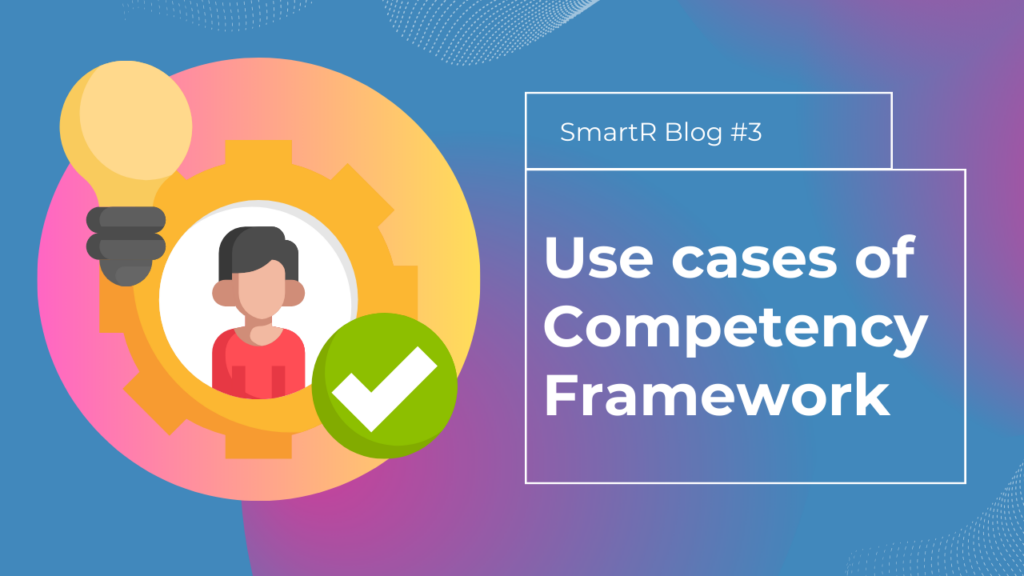Competency framework—a model that emphasizes and evaluates each employee’s potential and capabilities based on their occupational role—is increasingly regarded as essential to achieving high organizational performance in the current business environment. By laying out new organizational requirements, the Competency framework is invaluable in any change management process. Competency framework is effective in areas like Talent Development, Performance management, and Recruitment as well as supporting Talent strategy.
Today, we will explore the Use cases of Competency framework in people development, specifically in the context of Training need analysis (TNA) to bridge skill gaps. We will also discuss how the Competency framework can aid in workforce planning, including rotation, promotion, and hiring decisions. Let’s start!
> More on our previous blog post: What’s a Competency framework? and The benefits of using Competency framework
1. What is Training Needs Analysis (TNA)?
Training Needs Analysis (TNA) is a systematic process of identifying the gaps between the current skills and competencies of employees and the skills required to perform their jobs effectively. This enables organizations to allocate appropriate training resources.
2. Use cases of Competency framework in People development (especially in TNA)
- Identifying Training Needs: Skill gaps can be easily recognized and evaluated using a clear, standardized approach offered through the Competency framework. This allows organizations to identify the exact competencies required for development and the associated training courses to improve those competencies.
- Designing Targeted Training Programs: With the Competency framework as a guideline, organizations can create training plans targeted specifically at filling in existing skill gaps. When an organization provides training activities aligning employees’ needs with addressing their shortcomings, such alignment brings considerable success to the team. Participating employees can improve their skills, learn new ones, work efficiently, and contribute to business processes.
- Performance Management: The Competency framework works hand-in-hand with Performance management processes, such as performance appraisals and feedback sessions. By aligning performance expectations with the outlined competencies in the framework, organizations can provide clear guidance to employees on the skills they need to develop to meet required performance standards.
As a result, organizations can identify the specific areas where training and development interventions are required. This analysis helps in creating personalized training plans and allocating resources effectively.
3. Use cases of Competency framework in Workforce planning: Rotation, Promotion, and Hiring
Another use case of the Competency framework is its utilization in Workforce planning, i.e. Rotation, Promotion and Hiring.
- Rotation: Competency Framework identifies areas of development and interest for each employee and provides them with cross-functional opportunities to further their skills and experience. Competency framework also ensures that this process is fair, transparent, and consistent, and such practice will equip employees with adequate training and mentoring.
- Promotion: The Competency Framework establishes standards for promotion and evaluates an employee’s readiness and suitability for a higher-level role. When considering employees for promotion, the Competency Framework provides objective criteria for evaluating their readiness. These criteria are the results of consistent employee performance evaluations or well-collected 360-degree reviews from direct managers, peers, direct reports, etc.
- Hiring: The Competency Framework defines the essential and desirable competencies for a specific role. This definition allows HR directors to design and implement effective hiring strategies, such as competency-based interviews, tests, or simulations. By aligning the desired competencies with the job requirements, organizations can effectively assess candidates’ fit and potential for success. Specifically, this enables hiring managers to identify suitable candidates based on the actual requirements and their responsiveness to the job.
Conclusion
Competency Framework serves as a powerful tool for People development, Training needs analysis, and Workforce planning. By analyzing skill gaps and aligning training initiatives with competencies outlined in the framework, organizations can enhance employee performance, productivity, and career development.
Additionally, the Competency framework aids in Workforce planning activities, including rotation, promotion, and hiring decisions, by providing a standardized and objective basis for evaluating employees and candidates. Through the utilization of the Competency framework, organizations can build a sustainable and competent workforce, driving organizational success.
> Sign up now for streamless L&D task and grow your business faster with Competency Management
